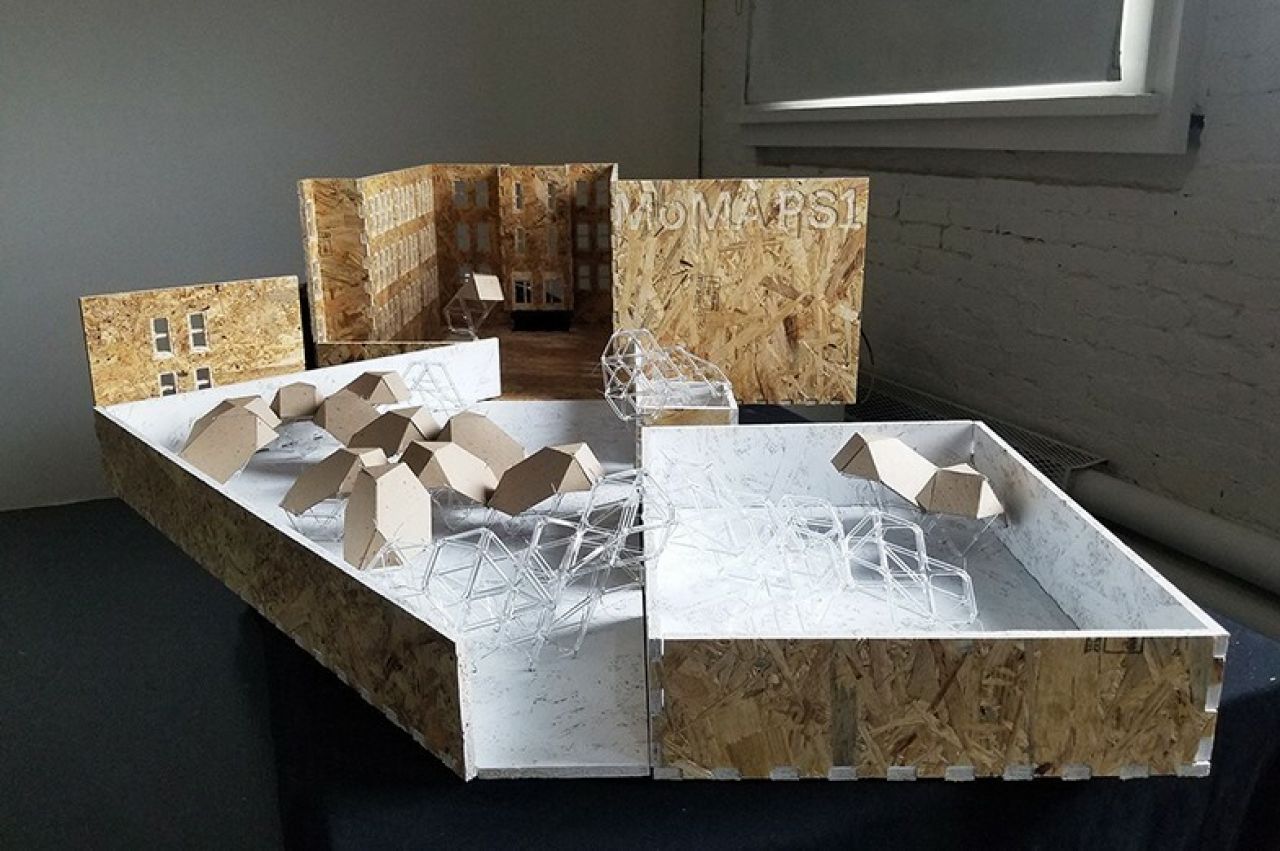October 04, 2019
Design by architecture, engineering professor featured in Architect magazine

UNIVERSITY PARK, Pa. – The design of mobile low-carbon structures by DK Osseo-Asare, assistant professor of architecture and engineering design at Penn State, has been featured by Architect magazine, the journal of the American Institute of Architects (AIA). Titled “Fufuzela,” the experimental bamboo structures are designed to function at the intersection of architecture and furniture while integrating biology with environmental design and engineering.
As a finalist in the 2019 Museum of Modern Art (MoMA) PS1 Young Architects Program, Osseo-Asare, who is also co-founder/principal of the Austin, Texas and Ghana-based architecture and integrated design firm Low Design Office, was commissioned to develop a proposal for the MoMA PS1 museum courtyard in the form of a series of images and a large-scale architectural model. The Fufuzela model and one of the renderings was exhibited over the summer at MoMA PS1, one of the oldest and largest contemporary art institutions in the United States, in Queens, New York. The model will next be on public view as part of an exhibition of architectural models in Austin, Texas, organized by the AIA.
The Stuckeman School provided production support for the development of the project. Architecture students in Osseo-Asare’s Humanitarian Materials Lab helped develop the project concept and build the final model. Danielle Vickers, an undergraduate architecture student, created concept images as part of the presentation delivered to MoMA’s design jury, while Sam Rubenstein, a master of architecture student, conducted bamboo research and created digital 3D models for computer-assisted machining. Rubenstein’s digital model was then used to fabricate all of the component pieces of the site model using a computer numerical control router. Jamie Heilman and Dani Spewak, staff members in the Stuckeman School’s Digital Fabrication Lab, provided instrumental support for iterative design development and production of the final model for MoMA PS1.
“We foresee a future wherein architecture is alive and mobile,” explained Osseo-Asare. “Our research is part of an anticipatory project toward that re-formation of spatial experience wherein architecture can sense and interact with people and its environment.” – DK Osseo-AsareThe entire model, which measures more than 9 square-feet, was packed flat in the Stuckeman Family Building and snapped together upon arrival in New York City, without the use of glue or fasteners. The individual architectural units were built out of laser-cut acrylic modules in the scale model. At full-scale, these architectural elements are a structural scaffolding for a variety of biomaterial systems, which architecture faculty continue to research at Penn State. Yasmine Abbas, an assistant teaching professor of architecture and engineering design, was also involved in the project by providing materials research and specifying certain configurations to create specific ambiances within the courtyard setting by modulating lighting, humidity and proximity of people to the structures. True to Osseo-Asare’s research interests in rethinking waste, the site model that was exhibited was constructed entirely out of the packaging crates from a large-format 3D printer. The printer, which was funded by the College of Engineering ‘s School of Engineering Design, Technology and Professional Programs, will be used to support interdisciplinary collaborative research around humanitarian materials through additive manufacturing by connecting architecture and engineering students through hands-on materials research.
